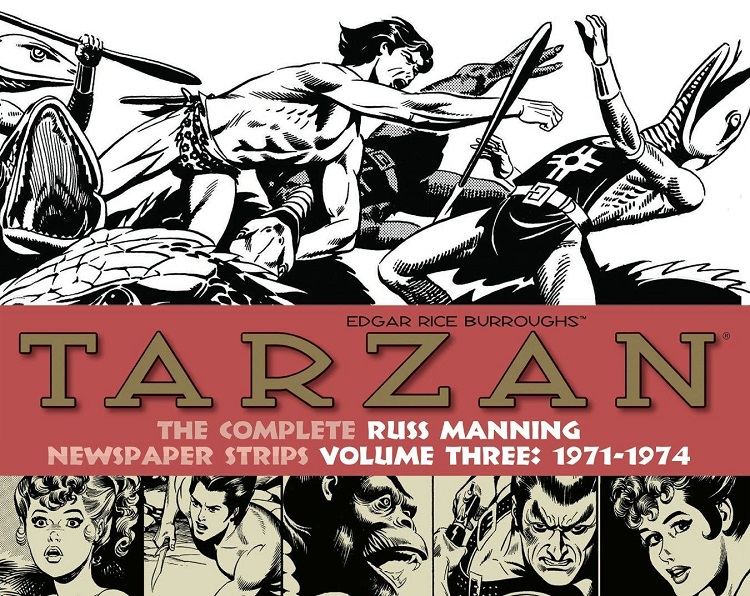
Volume Three of the Library of American Comics’ Eisner Award-winning, four-part collection of Russ Manning’s complete run of Tarzan newspaper strips reveals Manning continued to deliver a high quality of work in both story and art during this time. This book is notable for containing the final two daily strips stories.
Henry G. Franke III, editor of literary society The Burroughs Bibliophiles, returns to write another introduction. He explains how Manning creation of Tarzan graphic novels led to him only able to focus on Sunday strips, resulting in the end of his dailies. Franke also tells a great anecdote about how Manning used the strip to finagle himself boating equipment on the condition he would feature and accurately detail it in the strip.
The two stories from the dailies appeared from August 2, 1971 through July 29, 1972. “Korak and the White Water Runner” finds the prince of the jungle helping a risk-taking film crew, which offers a commentary on Hollywood. “Tarzan Returns to the Earth’s Core” references the previous Tarzan daily “Tarzan and the Cult of the Mahar” as Tarzan attempts to return the creature home to Pellucidar while getting involved in a battle between the apelike Sagoths and humans of Sari. The second story was an action-packed, suspenseful tale.
The four Sunday stories began on January 24, 1971 through to March 17, 1974. “Tarzan Returns to Pal-ul-don” because Jane takes a couple of girlfriends to the prehistoric land and naturally gets into trouble. Tarzan is aided by the diminutive Joiper. “Korak and the City of Xuja” finds Manning again using Korak in a story where he comments on modern youth as some hippies come to jungle to escape society but find it not to be the paradise they imagined. “Jad-bal-ja of the Apes” continues the previous Tarzan storyline in Pal-ul-don as he and Jane reunite with lost friends. “Korak and the Igotha” leaves the young man puzzled at the way a tribe puts its rightful leader on the throne.
Manning’s talents continue to impress in this volume. Aside from the simplistic “White Water Runner,” the stories are compelling adventures as the plots twist and turn before resolving. Jane and the other female are too often damsels-in-distress, but Jane does exhibit strength and courage in moments when called upon. It’s too bad it wasn’t more often Manning appears to really enjoy drawing dinosaurs, considering the two stories he set in Pal-ul-don, and he does a fantastic job bringing the creatures to life on the page. His line work, shading, and use of color remain at the high standard of artistry on display in the previous two volumes.
Volume Three is as good a place as any to jump into Russ Manning’s Tarzan strips. I can’t recommend them enough for those looking for adventure.